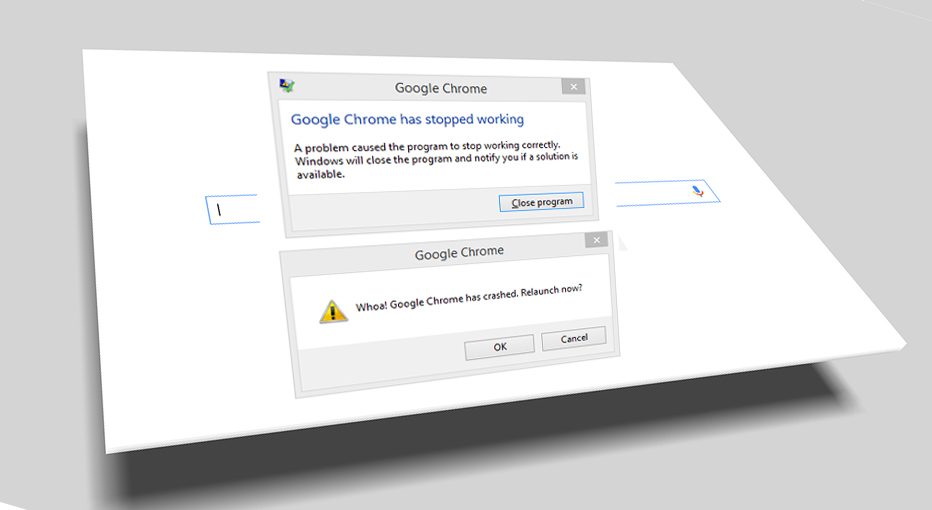

- Google chrome cleanup tool crashes drivers#
- Google chrome cleanup tool crashes update#
- Google chrome cleanup tool crashes manual#
This machine is running the latest driver via Windows Update, I am going to uninstall and update using Intel's driver and re-run tests.

Did Chrome kill the GPU process and in the process log to Windows Logs OR did the driver misbehave which in return caused Chrome to kill the GPU process? Is it safe to say this is a driver issue?Ģ. Timestamp of Windows System log driver issue (I am guessing it is rounded up): 10:07:53PMġ. Timestamp of WebGL Context lost error in Chrome: 10:07:52.938PM Windows System logs have warnings that the graphics driver stopped working, which happen at the same exact time. Memory hasn't had a chance to come up, so I doubt there is a leak.
/chrome-fix-feat-5bc6c18046e0fb0026e9ed17.jpg)
We have also seen this on the Iris 640 running the latest drivers.įor those interested, here's a comparison of heap snapshots at 7:30 and 5:30:Īfter reloading the page, 2 minutes into the simulation, GPU crashed with "Rats, WebGL hit a Snag".
Google chrome cleanup tool crashes drivers#
Note: these tests are run on an Intel i5 with an Intel Iris Graphics 540 on the latest drivers (23. If switching the tabs cleared the GPU memory back to initial, maybe the issue is that Chrome is trying to be too smart and not disposing of GPU objects, which puts a pressure on the machine and eventually runs out of memory? I know Kendo used to look in specific places for these files, so you could try arranging them back to how they were when you installed them.
Google chrome cleanup tool crashes manual#
Here's the confusing part: even after performing a manual GC, GPU memory stayed at ~490MB, until, I switched tabs and then it was back down to initial It appears you restructured your Kendo libraries on the hdd. The simulation was run for 30 minute intervals, with me capturing a heap snapshot followed by a screenshot of Chrome task manager (AFAIK Capturing Heap Snapshots also runs GC). Is it possible to know what exactly caused a WebGL_context_lost? (Chrome logs?) What tools can I use to look for GPU memory leaks? Is it possible for JavaScript heap to be leak-free, yet something to leak in the GPU? Versions: Chrome 65-66, Windows 10, THREE.js r91 There isn't a continuous climb towards a crash, indicative of a leak. Here's one of the screenshots showing only system objects left behind (ignore the size of the first Snapshot):īoth JavaScript memory and GPU memory climb in Chrome task manager, but stabilize (I feel GC is being deferred because of how frequent these operations are). I am well versed in Chrome Dev Tools Heap profiler and have run numerous tests which all came back with no objects left between each simulation (same simulations described above). I've put together stress tests that simulate user interaction, which are in a while(true) loop and these appear to take anywhere from 3 - 4 days to crash with a WebGL_Context_Lost event, which typically indicates a GPU process crash. Our long running THREE.js application (24/7) is crashing after a few days of use.


 0 kommentar(er)
0 kommentar(er)
